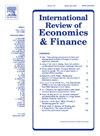平衡经济增长与养老金充足:降低缴费率与推迟退休年龄的联合效应
IF 5.6
2区 经济学
Q1 BUSINESS, FINANCE
引用次数: 0
摘要
降低养老金缴费率和推迟退休年龄是中国养老金改革的两个关键组成部分,尽管其动机是不同的政策目标。本研究建立了代际重叠模型,以评估代际重叠对经济增长和养老金充足性的影响,并确定适当的政策组合。结果表明,两种政策在理论上是互补的:降低缴费率刺激了经济增长,但降低了养老金替代率,而推迟法定退休年龄则产生相反的效果。当物质资本的产出弹性下降或技术进步加速时,一个校准良好的政策组合可以同时促进经济增长和提高养老金充足性。当模型纳入代理异质性和人力资本时,这些发现仍然是稳健的。此外,在灵活的退休计划下,降低缴费率对经济增长没有明显的影响,与之相关的养老金充足性下降可以忽略不计。这表明,降低缴费率与灵活退休相结合,可能是平衡经济增长和养恤金充足性的更有效策略。本文章由计算机程序翻译,如有差异,请以英文原文为准。
Balancing economic growth and pension adequacy: The combined effects of contribution rate reduction and retirement age postponement
Pension contribution rate reduction and retirement age postponement are two key components of China's pension reform, albeit motivated by distinct policy objectives. This study develops an overlapping generations model to evaluate their effects on economic growth and pension adequacy and identify an appropriate policy mix. The results show that the two policies are theoretically complementary: reducing the contribution rate stimulates economic growth but lowers the pension replacement rate, whereas delaying the mandatory retirement age has the opposite effects. A well-calibrated policy mix can simultaneously promote economic growth and enhance pension adequacy when the output elasticity of physical capital declines or the technological progress accelerates. These findings remain robust when the model incorporates agent heterogeneity and human capital. Moreover, under a flexible retirement scheme, reducing the contribution rate has no discernible impact on economic growth, and the associated decline in pension adequacy is negligible. This suggests that combining contribution rate reduction with flexible retirement may constitute a more effective strategy for balancing economic growth and pension adequacy.
求助全文
通过发布文献求助,成功后即可免费获取论文全文。
去求助
来源期刊
CiteScore
7.30
自引率
2.20%
发文量
253
期刊介绍:
The International Review of Economics & Finance (IREF) is a scholarly journal devoted to the publication of high quality theoretical and empirical articles in all areas of international economics, macroeconomics and financial economics. Contributions that facilitate the communications between the real and the financial sectors of the economy are of particular interest.

 求助内容:
求助内容: 应助结果提醒方式:
应助结果提醒方式:


